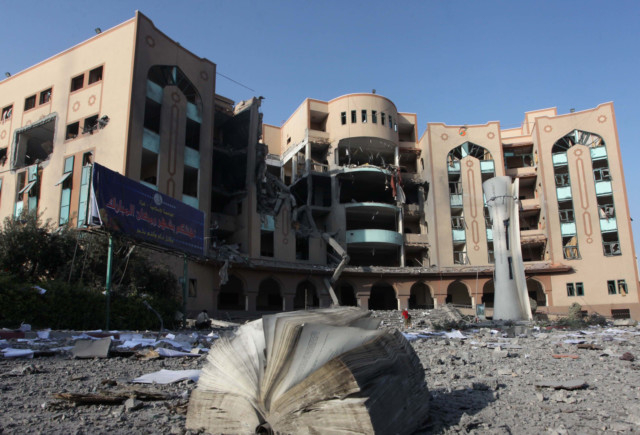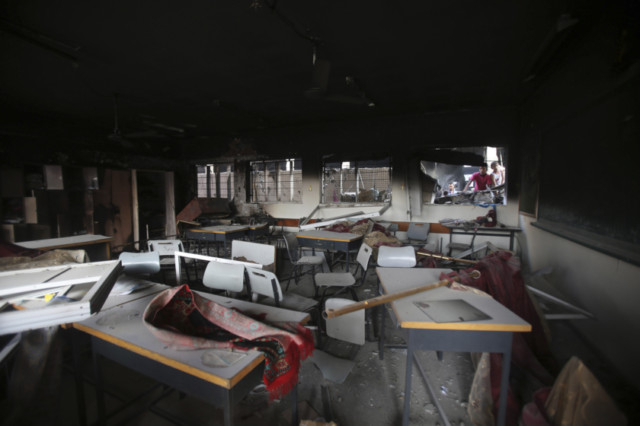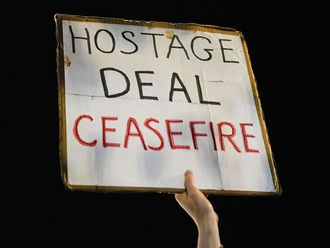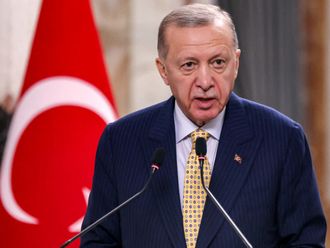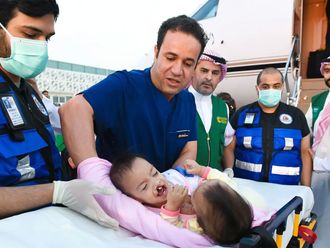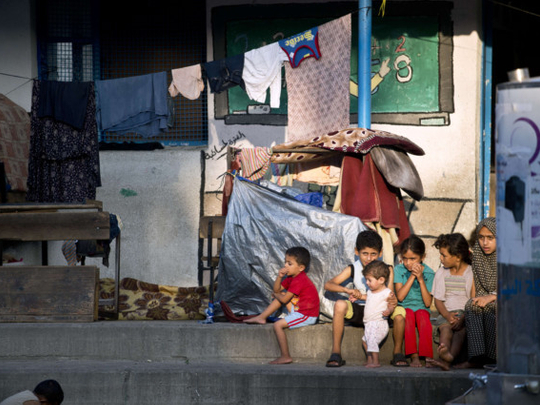
Gaza Vivid images recently emerged comparing what the Islamic University of Gaza once looked like with how it looks now. The “before” image shows an immaculately maintained edifice, green glass, well-maintained shrubs and men hurrying inside. The “after” photo shows a battered building, walls crumbling, windows shattered.
The school’s demolition highlights a potentially long-lasting side effect of the war: the destruction of Gaza’s educational facilities.
According to United Nations data released this week, 138 schools have been damaged by shelling, including 49 government schools and 89 schools run by the United Nations Relief and Works Agency (UNRWA). As of the report’s release, it was difficult to determine the full extent of the damage. “Access restrictions impede the ability to assess impact of hostilities and carry out repairs to damaged school infrastructure,” the UN report said.
Many schools are now too damaged or too overcrowded with displaced residents for lessons. More than 250,000 Palestinians have sought shelter in various UNRWA education centers, according to the Brookings Institution.
Marking the first day of the new school year in Gaza, dozens of children lined up in the courtyard early on Sunday morning to sing the Palestinian national anthem.
But this year, class did not begin.
Instead, the youngsters then recited the opening verse of the Koran - the Fatiha - to honour the more than 2,100 Palestinians killed in a 48-day Israeli military operation against Gaza.
They then returned to classrooms packed to the brim with families displaced by the conflict, in the UN school being used as a shelter in the north of Gaza City.
“Classes will remain closed in the conflict-stricken coastal enclave, denying these nearly 500,000 children their right to education,” UNICEF said in a statement Sunday.
“Frequent major military attack campaigns, the 7-year blockade, and the resulting collective psychological trauma are destroying the hope and means of education and with it the future of Palestinian children and youth,” warned the three authors of the Brookings article.
In 2010, the UN Educational, Scientific and Cultural Organization compiled this report to get to the bottom of how violence and Gaza’s long-term blockade can complicate learning. “The assessment reveals worrying trends,” it found. “…The education system is clearly suffering under the current blockade and military campaigns. The findings show that learners, as well as teaching staff, are functioning under immense strains and this strongly affects their abilities to learn and to teach.” It said students at every level of education experienced “nervousness, sadness and fear of attack” and a “decreased” ability to learn. “Both teachers and learners reported that learners have lower learning outcomes in comparison to before the war,” the research found. Boys suffered in their ability to concentrate and “girls experienced greater challenges to their psychological well-being.”
One parent said conflict changed her son. “One of my children is in secondary school,” the parent said. “He had always studied hard. He wanted to study abroad. But now he says, ‘What’s the point — I won’t get out.’ Now he doesn’t care about studies because of the siege.”
The United Nations polled thousands of students from primary school to universities and found 57 percent did “not feel safe at school.” More than 76 percent worried “there will be another war”; 86 percent said they “felt sad”; and 71 percent reported having “bad dreams.” The survey found students became more despondent as they aged. Only 26 percent of primary students said they were “not hopeful about the future,” but for university students, the number rose to nearly 72 percent.
“I was at the top of my class in school,” one 20-year-old male told the investigators. “At 11th grade, I had more than 90 percent average. I wanted to go to university and study forensics … my biggest dream. But after the siege, everything was different. I lost hope. I couldn’t study. I didn’t go to school until exams and then only got 60 percent so I couldn’t register at the university. I’ve been working in the tunnels for two years.”



